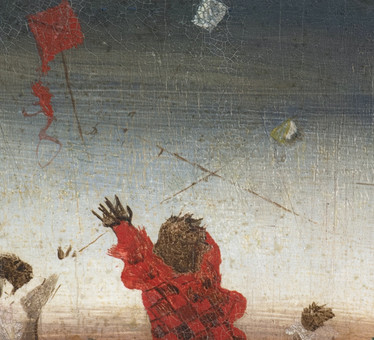Cândido Portinari

Brodowski, Brazil, 1903 —
Rio de Janeiro, Brazil, 1963
In the history of Brazilian art, Portinari’s painting is one of the most consistent efforts to define an image representing the country with its people, parties, agriculture and social ills.
The scenes of children’s games and rural landscapes of the early 1930s recall with playful simplicity the interior life that the artist knew in Brodósqui. It is interesting to note that, in these early compositions, the figures who play football or fly kites have proportions that refer to early childhood. Could this be the representation of a country learning to take its first steps? The strong feet planted in the earth characterize the coffee plantation workers, portrayed by Portinari in earthy tones and haughty posture. The artist’s interest in social themes found in muralism a coherent support, since it is used in public spaces.
At the behest of Minister Gustavo Capanema, of the Getúlio Vargas government, Portinari devoted almost ten years to the elaboration of the murals of the headquarters building of the Ministry of Education and Health, a building with modernist lines that symbolized a developing Brazil. Portinari covered the building’s walls with the “Economic Cycles”, in frescoes such as Cana, Pau-Brasil, Garimpo, Borracha and Café. At the same time that he aligned himself with other exponents of muralism in Latin America, Portinari also painted oil portraits commissioned by collectors or portraying figures from the Brazilian intellectual milieu, such as the artist Paulo Rossi Ossir, in whose ceramic workshop Portinari produced the famous tiles that decorate the ground floor of that building.
The artist’s great muralist work, the diptych Guerra e Paz, was completed in 1956, and is today at the United Nations (UN) headquarters in New York. Both in these two large panels of 14 meters in height and in the dramatic series on the retreatants of the 1940s, it is clear the importance that Portinari attributes to the fragmentation of space proposed by cubism, also present in the painting of the altar of the church of Pampulha and used in paintings with historical themes, such as the first mass in Brazil and the Prestes column. Brazil, its people and its history, is told by Portinari with the modernist language for the characterization of the national identity.